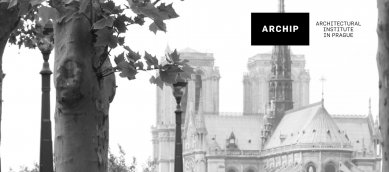
Sophie Eberhardt: Transferts culturels et discours nationaux
ARCHIP presents Building capitals in Europe in the 19th century: Cultural transfers and National discourses by Sophie Eberhardt. Friday 8. April 2016 at 4 p.m., Františka Křižíka 1, Prague.
No century was more decisive than the 19th century for the emergence and expansion of European capitals. Major geopolitical changes, economic growth, and population increase led to the unprecedented development of modern metropolis as symbols of national grandeur and prestige. This lecture will concentrate on cultural transfers in urban planning and architecture and national discourses that contributed to the modelling of European capitals in Europe in the 19th century. It aims at considering impulses but also conflicts that shaped cities such as London, Paris, Berlin, and Vienna and at allowing a better understanding of the metropolitan areas inherited in the 20th century.
Sophie Eberhardt is a historian of art and architecture (Université Paris 1 Panthéon-Sorbonne), Doctor in Geography and land settlement (Université Jean Moulin Lyon 3 / Université de Strasbourg), and professional in World Heritage Management (University College Dublin, Ireland). Sophie Eberhardt had her first work experience in diverse cultural institutions specialized in architecture and heritage in France, notably at the Ministry of Culture, in Spain, Ireland, Luxembourg, and the Czech Republic. She contributed to the coordination and elaboration of the application file of the Neustadt in Strasbourg (urban extension of the late 19th and 20th centuries) for World Heritage inscription carried out by the City authorities and the State institution (2011/14). Her research mainly focuses on the history and theory of architecture, urbanism, and heritage of the 19th and 20th centuries and the reception of the built environment.
More information >
No century was more decisive than the 19th century for the emergence and expansion of European capitals. Major geopolitical changes, economic growth, and population increase led to the unprecedented development of modern metropolis as symbols of national grandeur and prestige. This lecture will concentrate on cultural transfers in urban planning and architecture and national discourses that contributed to the modelling of European capitals in Europe in the 19th century. It aims at considering impulses but also conflicts that shaped cities such as London, Paris, Berlin, and Vienna and at allowing a better understanding of the metropolitan areas inherited in the 20th century.
Sophie Eberhardt is a historian of art and architecture (Université Paris 1 Panthéon-Sorbonne), Doctor in Geography and land settlement (Université Jean Moulin Lyon 3 / Université de Strasbourg), and professional in World Heritage Management (University College Dublin, Ireland). Sophie Eberhardt had her first work experience in diverse cultural institutions specialized in architecture and heritage in France, notably at the Ministry of Culture, in Spain, Ireland, Luxembourg, and the Czech Republic. She contributed to the coordination and elaboration of the application file of the Neustadt in Strasbourg (urban extension of the late 19th and 20th centuries) for World Heritage inscription carried out by the City authorities and the State institution (2011/14). Her research mainly focuses on the history and theory of architecture, urbanism, and heritage of the 19th and 20th centuries and the reception of the built environment.
More information >
The English translation is powered by AI tool. Switch to Czech to view the original text source.

0 comments
add comment




